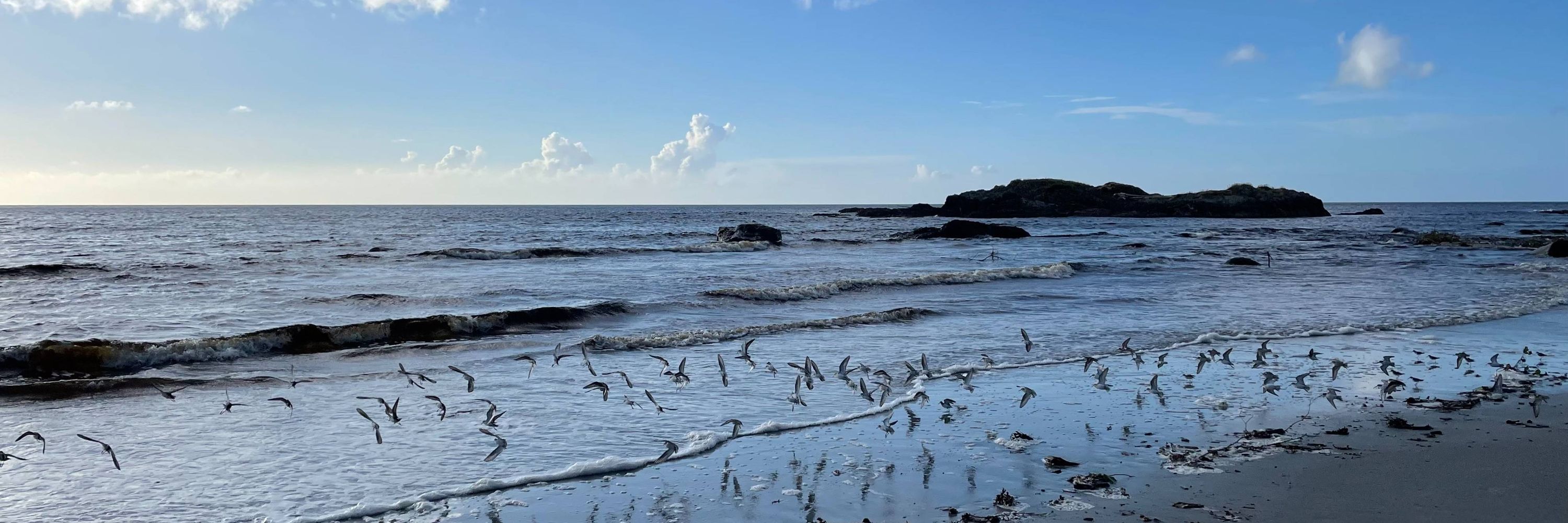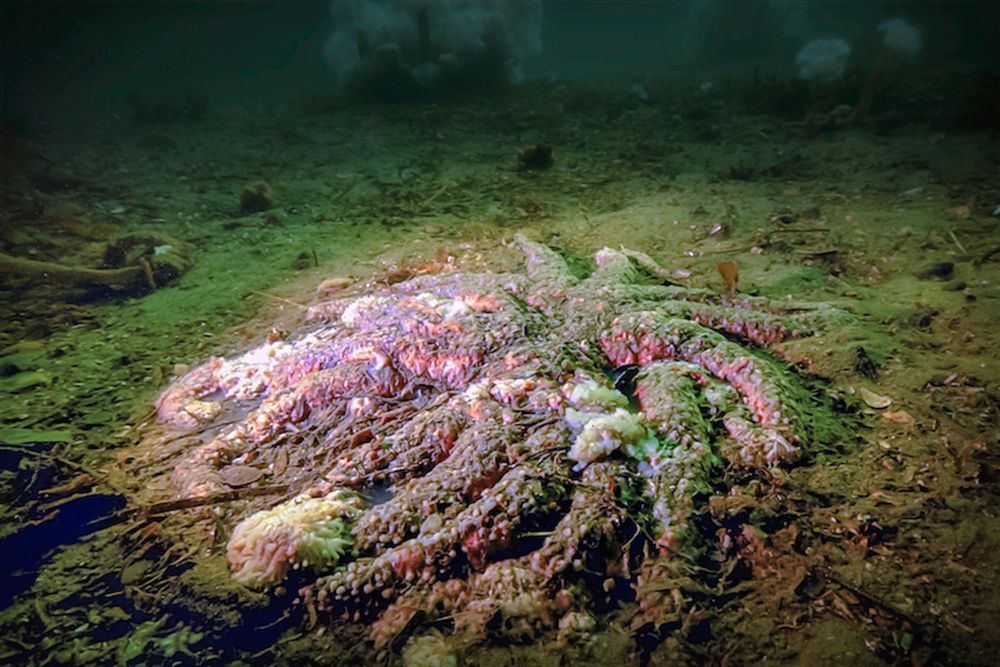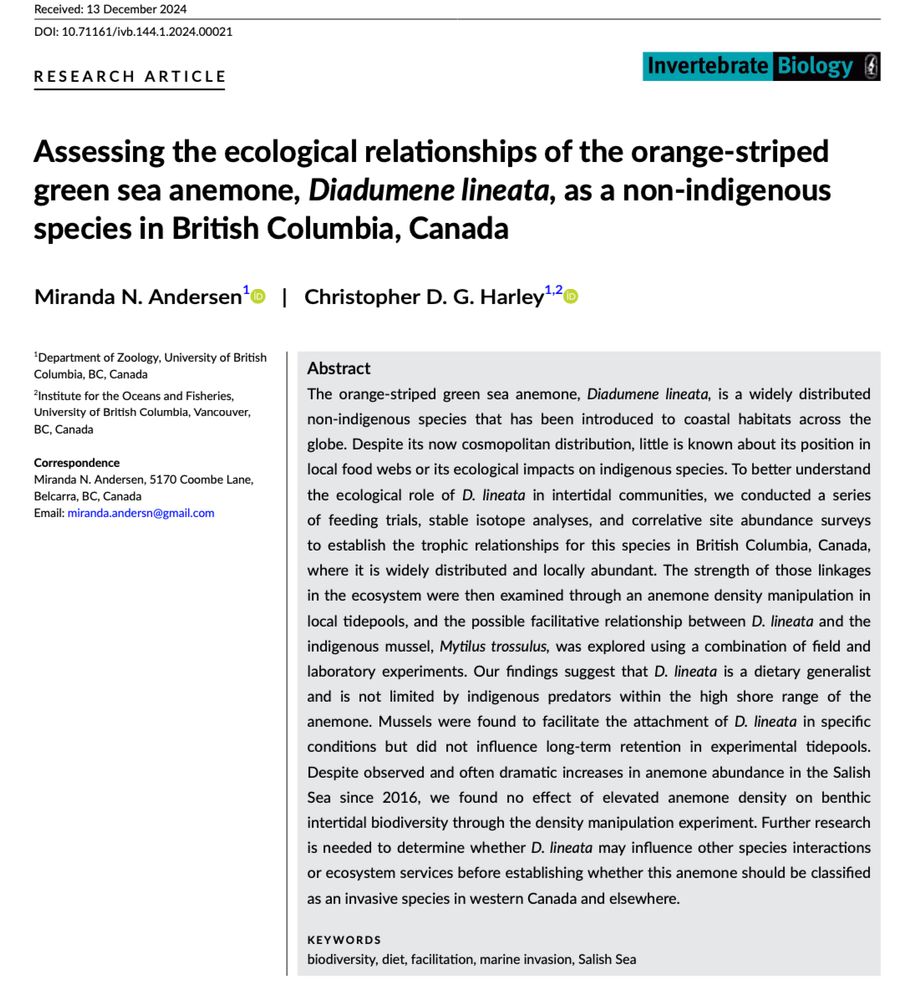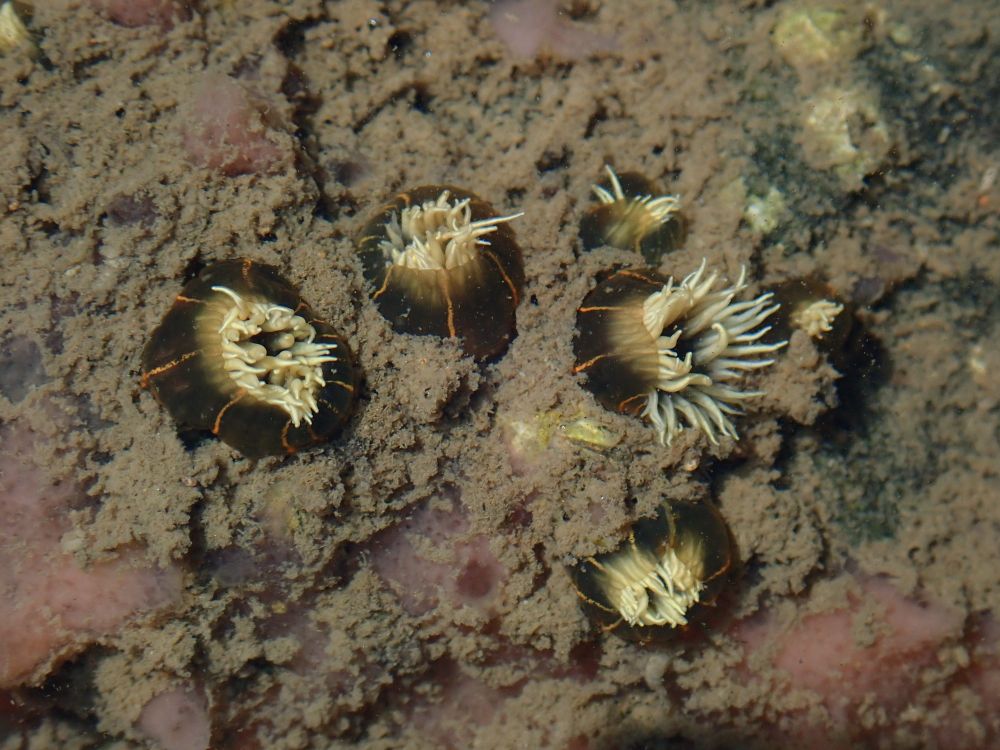Miranda Andersen
@mirandandersen.bsky.social
55 followers
120 following
6 posts
MSc candidate in South Africa, studying marine invasion ecology, bioinvasion management & sea anemones (she/her) 🇨🇦🌍🦀🪼
Posts
Media
Videos
Starter Packs
Reposted by Miranda Andersen
Reposted by Miranda Andersen
NeoBiota
@neobiota.pensoft.net
· Jun 16

Multiple targets of the Global Biodiversity Framework must be addressed to manage invasive alien species in protected areas
The Kunming-Montreal Global Biodiversity Framework (GBF) sets out ambitious global targets to reduce biodiversity loss by 2030 and will determine the conservation agenda for the next decade. Invasive ...
doi.org
Reposted by Miranda Andersen
Corey Bradshaw
@conservbytes.bsky.social
· Apr 25
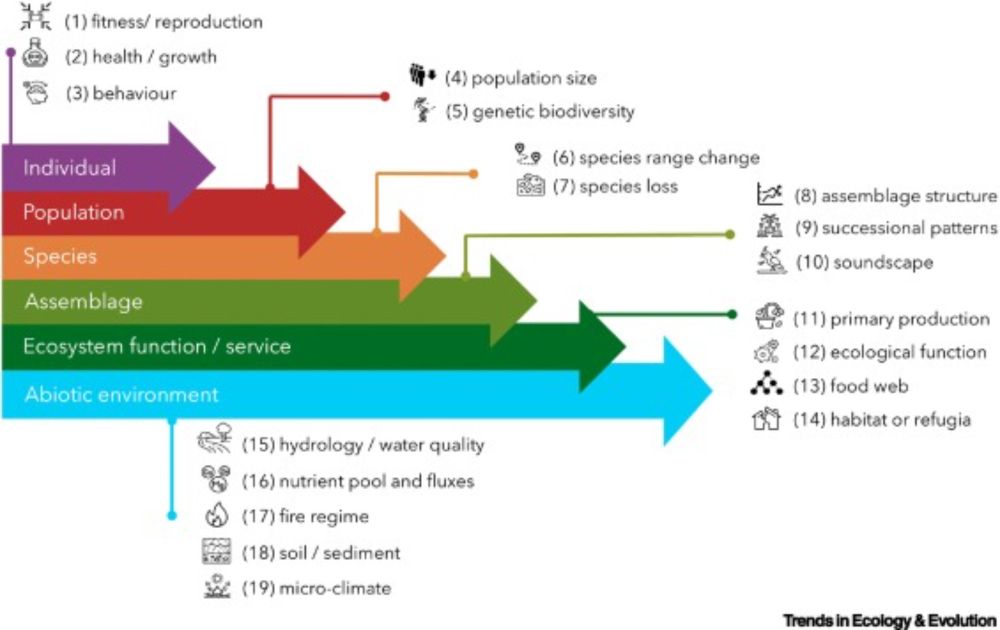
Typology of the ecological impacts of biological invasions
Biological invasions alter ecosystems by disrupting ecological processes that can
degrade biodiversity, harm human health, and cause massive economic burdens. Existing
frameworks to classify the ecolo...
www.cell.com
Reposted by Miranda Andersen
Alison Kock
@urbanedgesharks.bsky.social
· Apr 24

New marine alien species Amathia verticillata discovered in Langebaan Lagoon MPA – Stories – Scientific Services – SANParks
Alien species are organisms not native to an area, often out-compete indigenous species, for food and space, and usually have no natural predators. Langebaan Lagoon Marine Protected Area (MPA), locate...
www.sanparks.org
Reposted by Miranda Andersen
